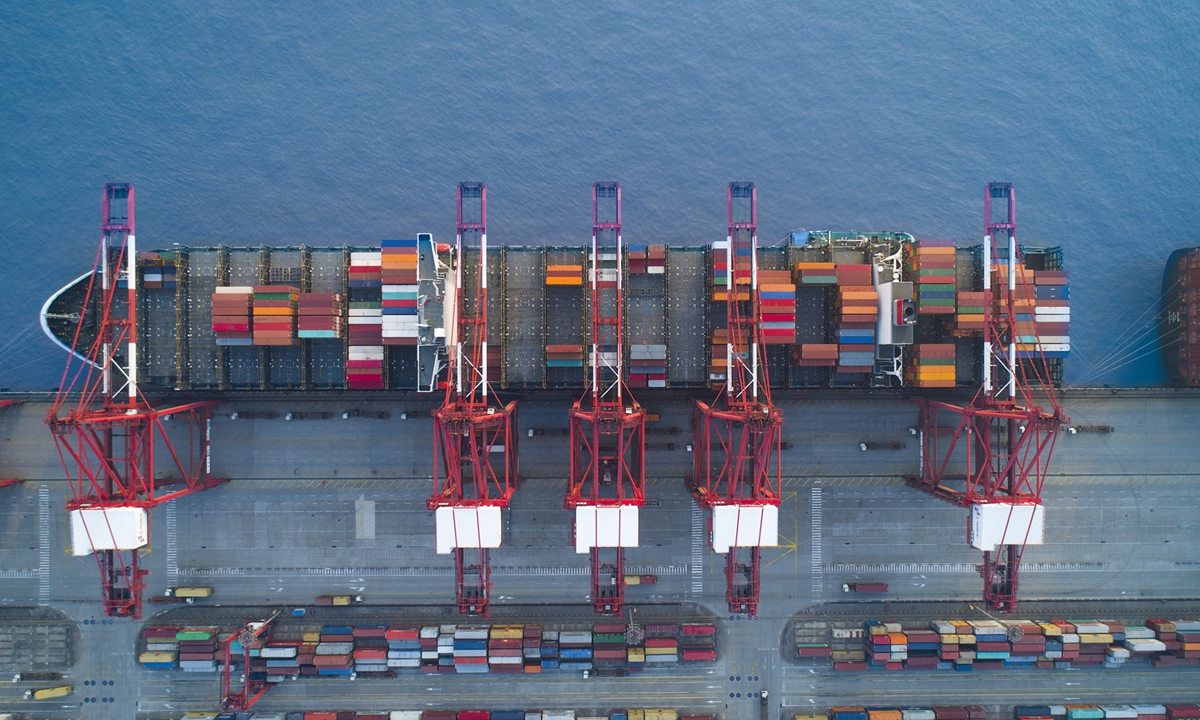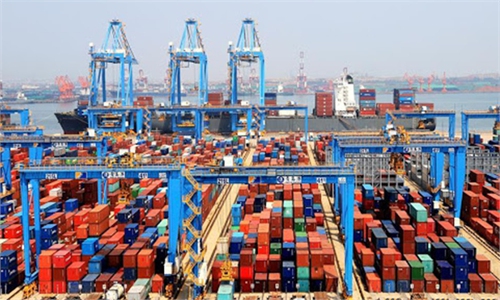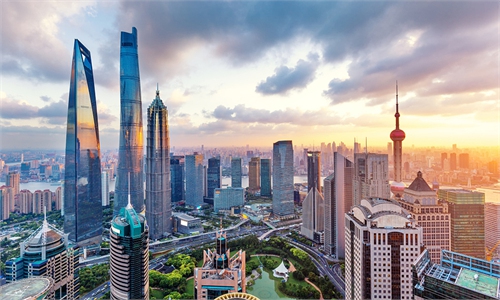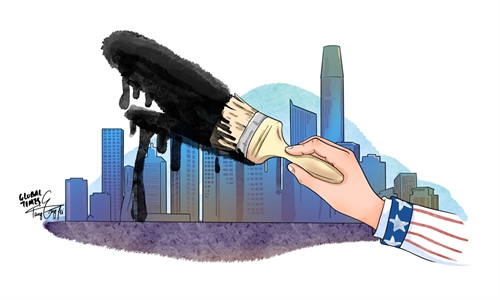
Photo: VCG
In its Asia Power Index for 2021 released on Sunday, the Sydney-based Lowy Institute said that while China improved on some resilience indicators, its influence in Asia has declined with its "isolationist" turn as well as structural problems such as the aging population and heavy debt load.Ever since China put forward a new development pattern featuring "dual circulation," there have been various doubts and overhyped concerns that the Chinese economy will turn inward. But biased interpretations such as the "decoupling theory," "closing doors" to the global market, and "isolationism" are nothing but more examples of misjudgment toward China's development path and its role in globalization.
There is no denying that the Chinese economy will be more dependent on domestic demand. Influential Chinese economist Huang Qifan said at a forum on Saturday that China's reliance on foreign trade or export will decline as the Chinese government shifts focus to ramping up domestic consumption.
It is important to note that China's emphasis on internal circulation within its economy was put forward in the context of rising global protectionism. The ravaging COVID-19 has hit hard the world economy, and has led to growing uncertainties in external demand. This is an appropriate and necessary adjustment China has made to its development pattern in light of the changing landscape.
For starters, China has the super large market to support its economy's internal circulation. In the past, with its weak economic base, China's domestic demand was limited, so expanding the external market to drive economic growth fits China's development pattern at that period. With its expanding middle-income consumer base, there will also emerge an irresistible trend for domestic demand to play a bigger role in China's economic growth.
Moreover, the strengthening of the internal circulation is not at odds with China's opening-up policy.
The dual role China has been playing as both the "world's factory" and the "world's market" is clear proof that China is not an isolated economy. And its support to global supply chains as well as opening-up efforts during the pandemic all indicate that it has no isolationist tendencies either.
China's overall trade has been on the rise even during the pandemic, with total imports and exports jumping 22.2 percent year-on-year to 31.67 trillion yuan ($4.89 trillion) in the first 10 months of this year, according to official data.
Apparently, China's growing economy will continue to benefit from the global division of labor, while the world economy will also benefit from the spillover effects of China's super large market.
While many may see the temporary impact of chip containment by the US, few realize that China's manufacturing foundation remains strong, and cannot be replaced by any other country. Even during the pandemic, Chinese manufacturing remains an integral part of the global production chain. Moreover, China is bound to move up the industrial chain and break the US containment.
The Western commentators have never been tired of making various bleak predictions about China's development pathway and its structural problems, but that only reveals their biased and flawed understanding of the Chinese economy. The reason why they cannot sketch an accurate picture of the Chinese economy is because they are anxious about China's development and competitiveness, which is linked to its political system. They are one-eyed fanatics of the Western economic experience and theories in analyzing problems linked to China's economic development, leading to pessimistic views about the Chinese economy.
While Western elites are living in an illusion of "isolating China," China is working on a plan to construct a new development pathway.

Photo: VCG
In its Asia Power Index for 2021 released on Sunday, the Sydney-based Lowy Institute said that while China improved on some resilience indicators, its influence in Asia has declined with its "isolationist" turn as well as structural problems such as the aging population and heavy debt load.Ever since China put forward a new development pattern featuring "dual circulation," there have been various doubts and overhyped concerns that the Chinese economy will turn inward. But biased interpretations such as the "decoupling theory," "closing doors" to the global market, and "isolationism" are nothing but more examples of misjudgment toward China's development path and its role in globalization.
There is no denying that the Chinese economy will be more dependent on domestic demand. Influential Chinese economist Huang Qifan said at a forum on Saturday that China's reliance on foreign trade or export will decline as the Chinese government shifts focus to ramping up domestic consumption.
It is important to note that China's emphasis on internal circulation within its economy was put forward in the context of rising global protectionism. The ravaging COVID-19 has hit hard the world economy, and has led to growing uncertainties in external demand. This is an appropriate and necessary adjustment China has made to its development pattern in light of the changing landscape.
For starters, China has the super large market to support its economy's internal circulation. In the past, with its weak economic base, China's domestic demand was limited, so expanding the external market to drive economic growth fits China's development pattern at that period. With its expanding middle-income consumer base, there will also emerge an irresistible trend for domestic demand to play a bigger role in China's economic growth.
Moreover, the strengthening of the internal circulation is not at odds with China's opening-up policy.
The dual role China has been playing as both the "world's factory" and the "world's market" is clear proof that China is not an isolated economy. And its support to global supply chains as well as opening-up efforts during the pandemic all indicate that it has no isolationist tendencies either.
China's overall trade has been on the rise even during the pandemic, with total imports and exports jumping 22.2 percent year-on-year to 31.67 trillion yuan ($4.89 trillion) in the first 10 months of this year, according to official data.
Apparently, China's growing economy will continue to benefit from the global division of labor, while the world economy will also benefit from the spillover effects of China's super large market.
While many may see the temporary impact of chip containment by the US, few realize that China's manufacturing foundation remains strong, and cannot be replaced by any other country. Even during the pandemic, Chinese manufacturing remains an integral part of the global production chain. Moreover, China is bound to move up the industrial chain and break the US containment.
The Western commentators have never been tired of making various bleak predictions about China's development pathway and its structural problems, but that only reveals their biased and flawed understanding of the Chinese economy. The reason why they cannot sketch an accurate picture of the Chinese economy is because they are anxious about China's development and competitiveness, which is linked to its political system. They are one-eyed fanatics of the Western economic experience and theories in analyzing problems linked to China's economic development, leading to pessimistic views about the Chinese economy.
While Western elites are living in an illusion of "isolating China," China is working on a plan to construct a new development pathway.



